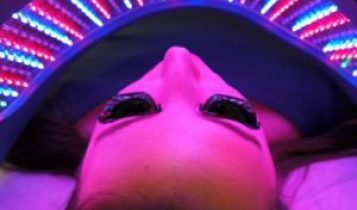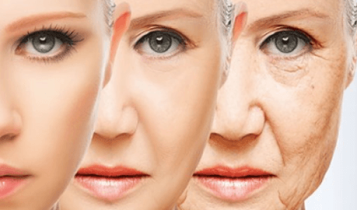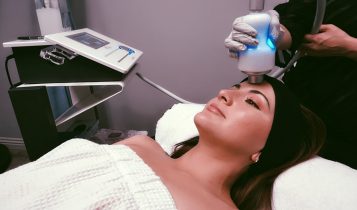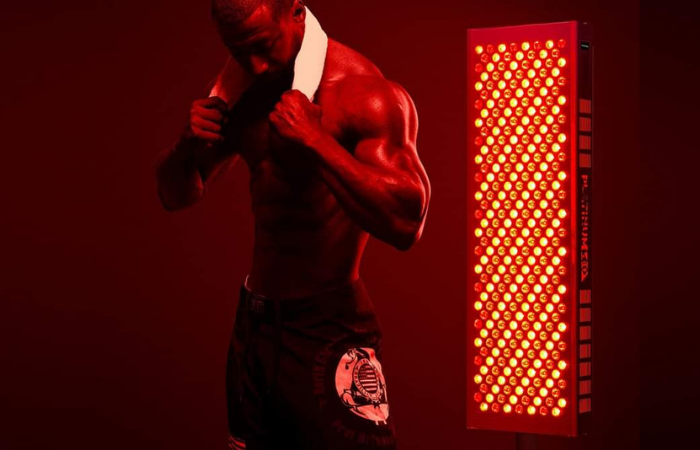
8 Benefits of Red Light Therapy
-
Facebook
-
Twitter
-
Reddit
-
Pinterest
-
Email
A Comprehensive Guide to Red Light Therapy
Red light therapy (RLT) is a proven clinical method that uses red low-level wavelengths of light to treat skin problems like wrinkles, scars, and chronic wounds, among other things.
Scientists used RLT to help grow plants in space in the early 1990s. The researchers discovered that the intense light from red light-emitting diodes (LEDs) aided plant cell growth and photosynthesis.
The potential of red light in medicine was then investigated, with the goal of determining whether RLT could increase energy inside human cells. RLT may be an effective treatment for muscle atrophy, slow wound healing, and bone density problems caused by weightlessness during space travel, according to the researchers.
You may be familiar with red light therapy (RLT) by other names, such as:
Photobiomodulation is a term that refers to the phase of (PBM)
- Light therapy at low intensity (LLLT)
- Cold laser therapy is a form of soft laser therapy.
- Bio-stimulant
- Low-power laser therapy with photonic stimulation (LPLT)
Photodynamic therapy is the term used when RLT is paired with photosensitizing drugs. The light only acts as an activator for the drug in this form of therapy.
Red light therapy comes in a number of ways. Red light beds, which can be found in salons, are said to help in the reduction of cosmetic skin issues such as stretch marks and wrinkles. In a medical office setting, red light therapy can be used to treat more severe conditions like psoriasis, slow-healing wounds, and even chemotherapy side effects.
How does the Red Light Therapy Works?
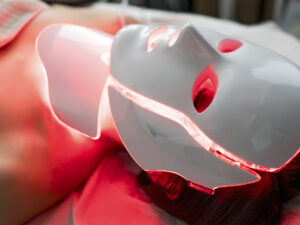
It’s assumed that red light works by triggering a biochemical reaction in cells that enhances the mitochondria. The mitochondria are the cell’s powerhouse, supplying the majority of the cell’s electricity. ATP is the energy-carrying molecule present in all living things’ cells (adenosine triphosphate).
RLT enhances mitochondrial function, allowing a cell to generate more ATP. Cells can act more effectively, rejuvenate themselves, and restore damage with more energy.
RLT differs from laser and extreme pulsed light (IPL) therapies in that it does not cause skin surface damage. Laser and pulsed light therapies operate by inducing tissue repair by causing controlled damage to the skin’s outer layer. RLT prevents this uncomfortable step by inducing skin regeneration directly. RLT emits light that penetrates about 5 millimeters under the skin’s surface.
How is Red Light Therapy Used?
Hundreds of clinical trials and thousands of experimental studies have been performed to assess if RLT has medical benefits after the initial experiments in space.
Despite the encouraging outcomes of several studies, the effects of red light therapy remain a subject of discussion. For example, the Centers for Medicare and Medicaid Services (CMS) has concluded that there is insufficient evidence to suggest that these devices are superior to existing therapies for wounds, ulcers, and pain.
To prove that RLT is successful, further clinical research is required. However, there is some evidence that RLT might have the following advantages for the time being:
- Promotes tissue repair and wound healing
- Improves hair growth in people with androgenic alopecia helps in the treatment of carpal tunnel syndrome in the short term stimulates the healing of slow-healing wounds, such as diabetic foot ulcers.
- Reduces the presence of psoriasis lesions.
- In people with rheumatoid arthritis, it helps with short-term pain relief and morning stiffness.
- Some cancer treatment side effects, such as oral mucositis, are minimized.
- Trusted Source enhances skin tone and collagen quality.
- Wrinkle Reduction from a Credible Source
Owing to a lack of facts, RLT is not currently accepted or protected by insurance providers for these conditions. RLT is also protected by a few insurance providers to avoid oral mucositis during cancer care.
What are the red light therapy benefits?
Red light therapy benefits (RLT) uses low-wavelength red light to treat skin problems. Many experts agree it will assist in the treatment of skin disorders, scarring, and aging symptoms such as wrinkles and age spots.
Many of these arguments are backed by evidence, but RLT is not a miracle cure.
Anyone thinking about undergoing the procedure should also take other measures to improve their skin’s health. Any side effects can occur if RLT is used incorrectly.
Anyone who is unsure if RLT is right for them should consult their physician.
It Helps Your Skin Glow

The majority of people are interested in RLT as a way to improve skin health.
A significant number of studies have been conducted as a result of the potential for using RLT to rejuvenate the skin. According to a study published in the journal Seminars in Cutaneous Medicine and Surgery, RLT can help the skin rejuvenate by:
- Collagen development in the skin is increased, which gives the skin its elasticity.
- Increasing the development of fibroblasts, which assist in the production of collagen and other tissue fibres.
Increasing the flow of blood between the cells of the body. - Defending cells from harm.
- Increasing the amount of mRNA in the cells, which aids in cell stimulation.
- Improving the shape of the face.
- Minimising fine lines.
- Reducing the severity of wrinkles.
- Improves acne.
Types of light therapy are possible solutions for the treatment of acne vulgaris, according to a study published in Seminars in Cutaneous Medicine and Surgery.
The sebaceous glands may be affected by sunlight. Sebum is formed by the sebaceous glands, which can clog pores and cause acne. Sunlight can be helpful in calming overactive glands.
Many people’s problem with sunlight is that it exposes them to ultraviolent (UV) A and UVB rays, which can cause other skin problems over time. These may be severe, and involve the development of skin cancer.
Helps in Healing of the Wounds
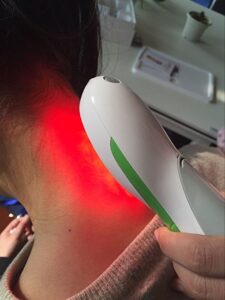
It’s also possible that red light therapy benefits can help with wound healing.
According to research published in the journal Anais Brasileiros de Dermatologia, light therapy can assist wound healing in a number of ways, including:
reducing inflammation in the cells promoting the formation of new blood vessels (angiogenesis) in the skin increasing beneficial fibroblasts in the skin increasing collagen production in the skin
More human studies are required to validate these findings.
Hair Growth

The effect of low-level light on people with alopecia was studied in a small study published in the Journal of Cosmetic and Laser Therapy.
People who got RLT had better hair density than those in the control group, according to the report.
The effect was beneficial when people used light with wavelengths of 665 nanometres (nm) and 808 nm, according to scientists.
However, this was a small sample, and larger clinical trials would be required to back up these claims.
Anti Inflammatory Benefits

Many of the disorders that RLT addresses have their origins in inflammation, according to research published in the journal AIMS Biophysics.
RLT has important anti-inflammatory effects in the body, but the exact cause is unknown. These effects are both local and systemic, occurring in other tissues and organs in the body where practitioners administer the light.
The anti-inflammatory properties of RLT, as well as the possible applications for this treatment, are numerous, according to the researchers.
More research is needed to see if it can help with chronic inflammatory problems like:
- Alzheimer’s disease
- Obesity
- Alopecia areata type 2 diabetes
- autoimmune thyroiditis, or thyroid inflammation, psoriasis arthritis tendinitis, or tendon inflammation
- The study is also in its early stages. RLT, on the other hand, has a promising anti-inflammatory effect.
Previous research has emphasized the significance of the wavelengths that people use to target their skin.
Summary
RLT is usually safe and can be a good treatment choice for people who want to make minor improvements to their skin to keep it healthy and minimize inflammation.
Other RLT applications show early promise, but there isn’t enough credible evidence in humans to say it’s successful in every situation.
RLT is only one aspect of a thorough skincare regimen, and it should not be used as the primary means of skincare. It can take multiple RLT treatments for a person to notice a difference in their skin.
Anyone who is unsure if the profession is right for them should speak with a doctor about the possible benefits.
therapy(medicine) the act of caring for someone (as by medication or remedial training etc.)More (Definitions, Synonyms, Translation)

